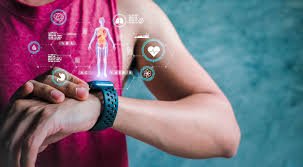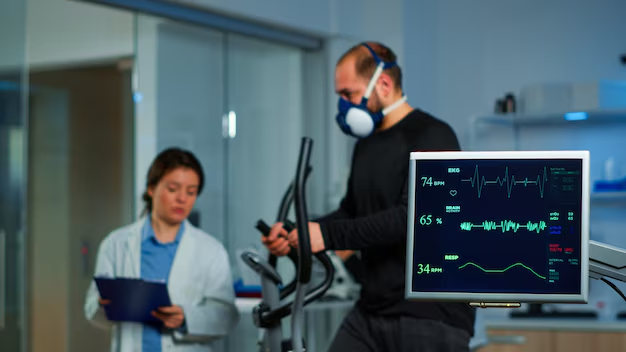Wearable health technology has transformed the way people monitor their health, track fitness, and manage medical conditions. From smartwatches that track heart rate to AI-powered biosensors, these devices provide real-time health insights and improve overall wellness. As technology advances, new innovations continue to emerge, making wearable health tech more sophisticated and accessible than ever before. In this article, we will explore the latest wearable health tech innovations and their impact on personal health management.
The Evolution of Wearable Health Technology
Early Wearables
Wearable health technology began with basic pedometers and heart rate monitors. These early devices focused on fitness tracking and provided limited health insights.
Modern Advancements
Today, wearable health tech has evolved into smart devices that integrate AI, IoT, and real-time data analytics. They offer comprehensive health monitoring, including:
- Heart rate tracking
- ECG monitoring
- Blood oxygen level detection
- Glucose monitoring
- Stress and sleep tracking
Latest Innovations in Wearable Health Tech
1. Smartwatches with Advanced Health Features
Modern smartwatches now go beyond step counting and calorie tracking. They include:
- ECG Monitoring: Detects irregular heart rhythms and potential heart conditions.
- Blood Oxygen Sensors (SpO2): Helps monitor oxygen saturation, especially useful for people with respiratory issues.
- Blood Pressure Monitoring: Some smartwatches can measure blood pressure using optical sensors and AI algorithms.
- Stress and Sleep Analysis: AI-driven algorithms assess stress levels and sleep quality, providing recommendations for better rest and mental health.
2. AI-Powered Wearable Biosensors

Biosensors are small, non-invasive devices that collect and analyze biological data. Recent innovations include:
- Continuous Glucose Monitors (CGMs): Helps diabetics track glucose levels in real time without finger pricking.
- Wearable Sweat Sensors: Detects hydration levels, electrolyte balance, and stress biomarkers.
- AI-Integrated Biosensors: Uses machine learning to predict potential health risks based on collected data.
3. Smart Rings for Health Monitoring
Smart rings are gaining popularity due to their compact design and powerful health-tracking capabilities. Key features include:
- Heart Rate and SpO2 Monitoring: Provides continuous heart rate and oxygen level tracking.
- Sleep and Recovery Tracking: Uses biometric data to analyze sleep patterns and optimize recovery.
- Temperature Monitoring: Detects body temperature changes, which can help in early illness detection.
4. Wearable ECG Monitors
While many smartwatches include ECG features, dedicated wearable ECG monitors provide more precise cardiac assessments. These devices:
- Detect arrhythmias and potential heart conditions.
- Provide real-time ECG readings that can be shared with healthcare providers.
- Are lightweight and easy to wear for continuous heart health monitoring.
5. Smart Clothing and Textile Sensors
Innovations in smart clothing have enabled the integration of sensors into fabrics for seamless health monitoring. Some examples include:
- Smart Shirts: Equipped with ECG sensors and respiratory monitors.
- Compression Socks with Circulation Monitoring: Helps prevent deep vein thrombosis (DVT) by tracking blood flow.
- Posture-Correcting Wearables: Sends gentle reminders to improve posture and reduce back pain.
6. Wearable Devices for Mental Health Monitoring
Mental health wearables are designed to track emotional well-being and provide stress management solutions. New advancements include:
- Brain-Sensing Headbands: Uses EEG technology to monitor brain activity and improve meditation practices.
- Haptic Feedback Devices: Sends gentle vibrations to reduce anxiety and stress.
- Wearable Mood Trackers: Analyzes biometric data to detect emotional changes and provide wellness suggestions.
7. Augmented Reality (AR) and Virtual Reality (VR) Health Wearables
AR and VR wearables are being used in health and rehabilitation. Some key applications include:
- VR Therapy for Mental Health: Used to treat PTSD, anxiety, and phobias.
- AR Smart Glasses for Surgeons: Helps doctors perform precision surgeries with real-time data overlays.
- Rehabilitation and Physical Therapy: VR-based rehab programs assist in recovery from injuries or neurological disorders.
8. Wearable Air Quality Monitors
Air quality wearables are designed to help people track environmental conditions and reduce exposure to harmful pollutants. Key features include:
- Real-time air pollution detection
- Allergy and asthma management
- GPS-based air quality alerts
Benefits of Wearable Health Tech Innovations
1. Early Disease Detection
Wearable devices help detect health issues such as heart disease, diabetes, and sleep disorders at an early stage.
2. Real-Time Health Monitoring

Provides continuous monitoring, allowing individuals and doctors to track changes instantly.
3. Personalized Health Insights
AI-powered analytics provide personalized recommendations for fitness, sleep, and stress management.
4. Remote Patient Monitoring
Wearables enable doctors to track patients’ health remotely, reducing hospital visits and improving care for chronic conditions.
5. Enhanced Fitness and Wellness Tracking
Encourages a healthy lifestyle by tracking steps, workouts, and overall activity levels.
Challenges and Future of Wearable Health Tech
Challenges
- Data Privacy Concerns: Personal health data security remains a key issue.
- Accuracy Issues: Some wearables may not provide 100% accurate health data.
- Cost and Accessibility: Advanced wearable tech can be expensive and inaccessible to some users.
Future Trends
- Integration with AI and Big Data: AI will enhance wearables’ ability to predict diseases and offer proactive solutions.
- Non-Invasive Health Monitoring: Future wearables may eliminate the need for blood tests and invasive procedures.
- Improved Battery Life: New energy-efficient technologies will make wearables more reliable for long-term use.
Also Read: What Is Neural Interface Technology?
Conclusion
Wearable health technology continues to evolve, offering new ways to track, analyze, and improve health. Innovations like smartwatches, biosensors, smart rings, and AI-powered devices are revolutionizing personal health management. While challenges exist, the future of wearable health tech looks promising, with advancements in AI, big data, and non-invasive monitoring leading the way. Whether for fitness tracking, disease prevention, or mental health monitoring, wearable health tech is shaping the future of healthcare.
FAQs
1. What is the most advanced wearable health technology today?
Smartwatches with ECG monitoring, AI-powered biosensors, and smart rings with temperature tracking are among the most advanced wearable health technologies available.
2. Are wearable health devices accurate?
While most wearable health devices provide reliable data, their accuracy can vary. Some are FDA-approved and offer medical-grade monitoring, while others are best for general wellness tracking.
3. Can wearables replace regular doctor checkups?
Wearables can provide valuable health insights, but they should not replace regular medical checkups. They work best as a supplement to professional healthcare.
4. Are there wearable devices for mental health monitoring?
Yes, wearable devices like brain-sensing headbands, haptic feedback devices, and mood trackers help monitor and manage mental health conditions.
5. What is the future of wearable health tech?
The future of wearable health tech includes AI-driven health predictions, non-invasive monitoring, improved battery life, and seamless integration with healthcare systems.





